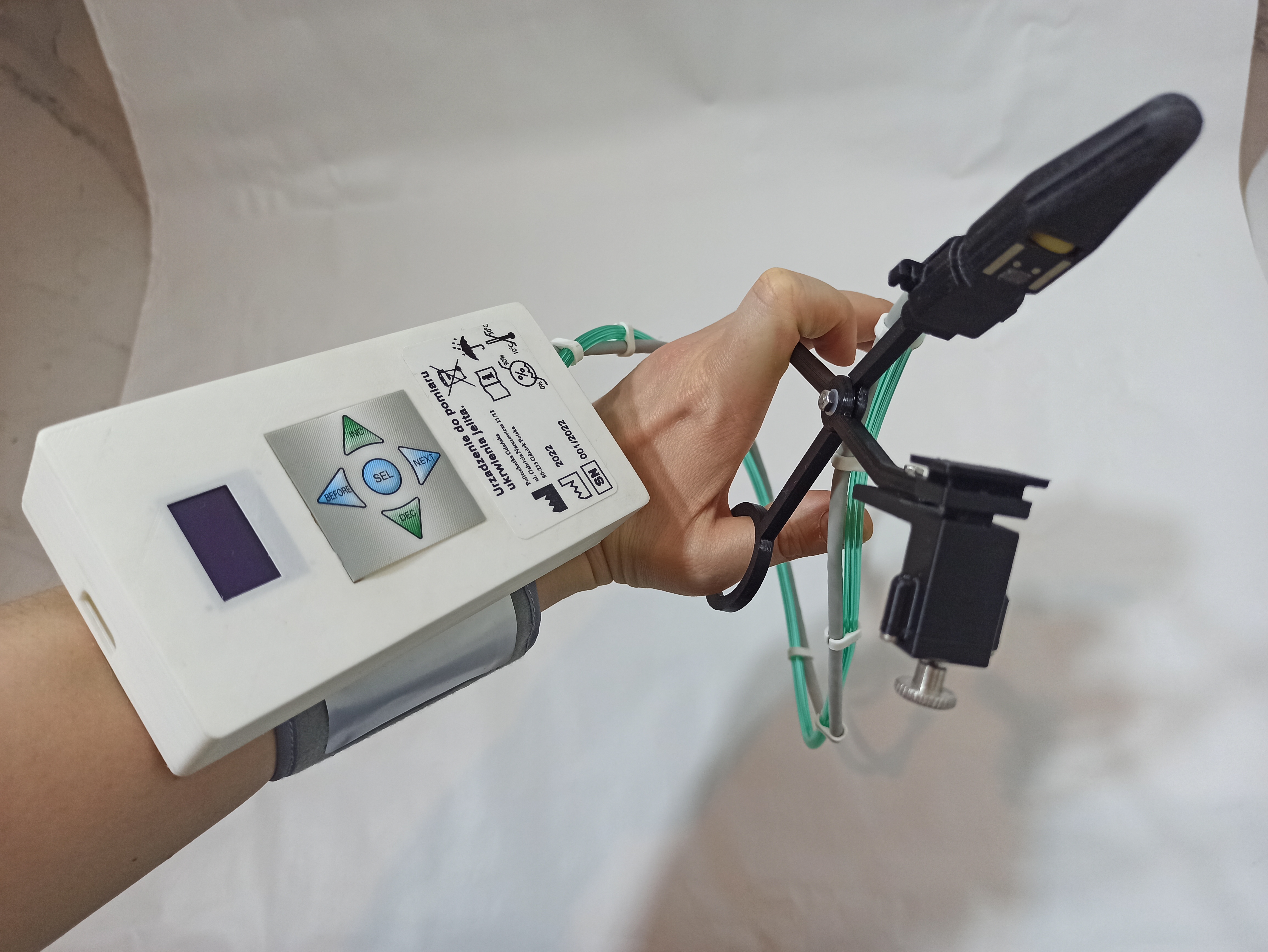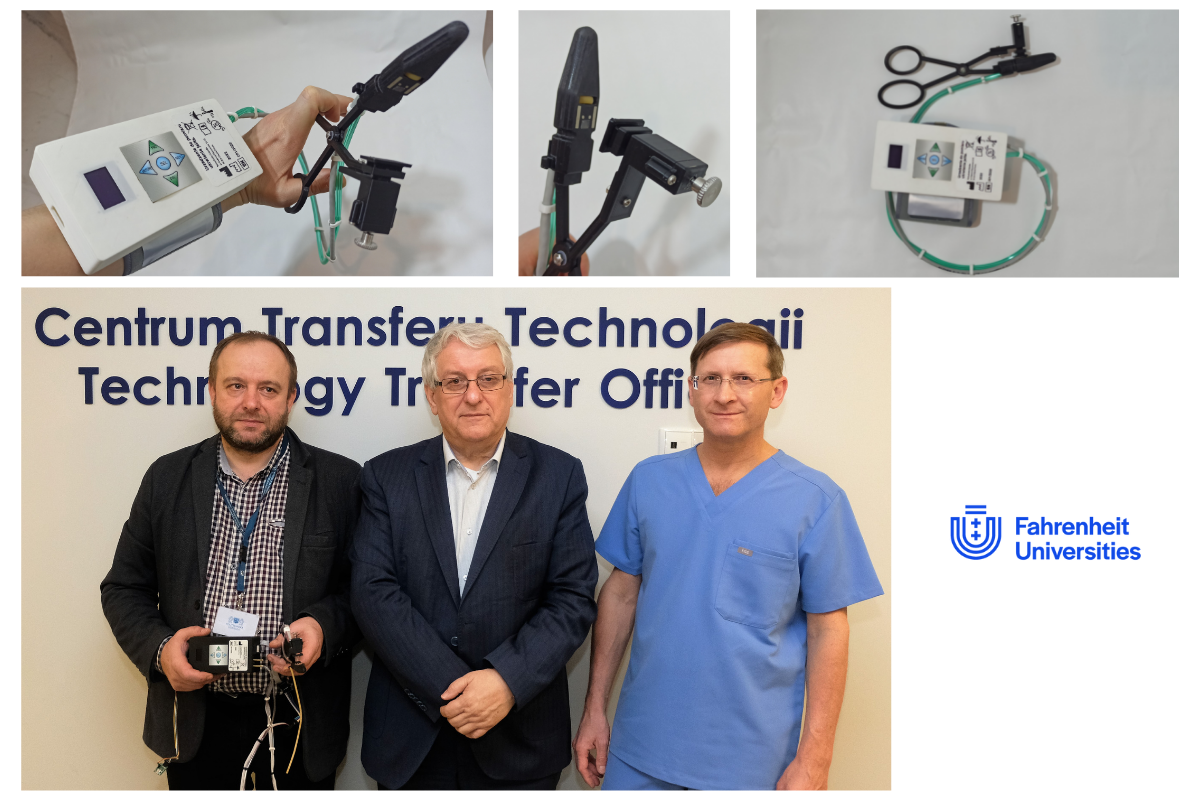An innovative device for the assessment of blood supply to the gastrointestinal tract
A team of scientists from the Medical University of Gdańsk and the Gdańsk University of Technology under the supervision of Prof. Jacek Zieliński from the Department of Surgical Oncology of the MUG has developed a prototype of an innovative device for intraoperative blood flow testing in the organs of the gastrointestinal tract. The proposed solution may significantly increase the effectiveness of the performed surgical procedures by reducing the number of potential postoperative complications. It was carried out as part of the project “Method and device for the combined assessment of blood supply to the organs of the gastrointestinal tract”, headed by Prof. Jacek Zieliński from the MUG. The funds allocated for this purpose in the amount of PLN 100,000 come entirely from the Innovation Incubator 4.0 program, which is financed from European funds as part of the non-competitive project “Support for scientific research management and commercialization of R&D results in research units and enterprises”. It is implemented under the Intelligent Development Operational Program 2014-2020 by the MUG Technology Transfer Centre.
from left: Adam Bujnowski, Ph.D., Prof. Jerzy Wtorek, Prof. Jacek Zieliński
– In surgery, the blood supply to the tissues is the basic condition that guarantees proper wound healing. This principle applies to all types of operations, but the proper blood supply to the tissues is of particular importance in gastrointestinal surgery and during extensive operations in other parts of the body. In the case of the gastrointestinal tract, the blood circulation disorder is closely related to the level of resection, starting from the esophagus and ending with the distal area, i.e. the rectum – says Prof. Jacek Zieliński, project supervisor.
In practice, the organs at high risk of ischemia are: the esophagus, which is anastomosed with the stomach, small intestine or large intestine. Another place in the digestive tract where blood supply is disturbed is the rectal stump and the end of the small or large intestine used for anastomosis or stoma. After resection of a section of the gastrointestinal tract, one of the most important conditions for proper healing is the anastomosis of tissues with proper blood supply. In the case of an incorrect assessment of the blood supply to tissues and the method of their anastomosis, e.g. in the intestines, postoperative complications may appear, which in their mildest stage require corrective surgery, and at worst may lead to serious consequences, including sepsis or death of the patient. According to the literature data, the leakage of anastomosis is estimated in the range of 3-30% of cases.
Current methods of blood supply assessment
At present, the blood supply to the tissues, including the gastrointestinal tract, is mainly assessed based on the experience of the surgeon. In practice, the blood supply to the examined part of the digestive tract is assessed by means of two techniques: (a) macroscopic, i.e. visual, (b) palpation (tactile). As an auxiliary method of blood supply, the technique using indocyanine green, known as the fluorescent method, is used.
– The idea of creating the device was born during my daily work at the Division of Surgical Oncology of the University Clinical Centre. All of the commonly used methods of tissue blood supply assessment provide information with a high degree of subjectivity, which may increase the risk of surgery failure. I decided that it is worth making the effort to create a method and device that, on the one hand, would contribute to increasing the level of safety of the operated patients, and, on the other hand, would also increase the comfort of the surgeon’s work – explains Prof. Zieliński.
Professor Jacek Zieliński, in consultation with scientists from the Department of Biomedical Engineering at the Gdańsk University of Technology, created an interdisciplinary team whose task was to find an effective solution. Thanks to the synergy resulting from the application of practical clinical knowledge with bioengineering and the use of several measurement methods, it was possible to create the world’s first system for the combined assessment of gastrointestinal blood flow. The set consists of a probe equipped with a number of measuring sensors and an electronic control unit. During the surgical procedure, the probe of the device inserted into the intestine, for example, provides the operating team with information on the degree of oxygen saturation of the tissues. This makes it easier to perform anastomosis ensuring proper wound healing.
– The problem is quite complex and demanding – explains Prof. Jerzy Wtorek, Coordinator of the BioTechMed Centre of the Gdańsk University of Technology. – First, it is about measuring very small volumes that vary in structure and properties of tissues. The volume of blood, therefore, is also small. Moreover, the evaluation is performed after the resection of a part of the tissue, i.e. the blood system is haemodynamically “open” and thus the physiological range of the parameters describing the blood flow cannot be assumed during the measurements. Hence, the method used to assess the blood supply is relatively complex and, depending on the situation, multi-stage. In the event that the measurements are subject to high uncertainty, subsequent measurements are automatically carried out, and their evaluation is conducted using more advanced analysis methods. However, despite the relatively complex measurement procedure and advanced processing techniques, we managed to propose a solution that does not absorb the surgeon and – which is also important – the time of the assessment is acceptable from the point of view of the surgical procedure. The great advantage of the method is also the possibility, if necessary, of multiple measurements on the same patient, which has practically no effect on the duration of the surgical procedure. In summary, we developed a multimodal device and appropriate measurement procedures to assess the blood supply and viability of the anastomosed tissues. It was possible thanks to controlling the dynamic changes in blood volume in the examined tissue. The method does not burden the surgeon with additional and complex activities and we hope that, after conducting experimental tests, the obtained results will help the surgeon to make decisions, also thanks to the interpretation of the results being unambiguous.

Benefits of using the device in operative conditions
The developed set has a number of advantages, the most important of which are the small size, weight and handiness of the device. As a result, the operation of the device is comfortable and does not extend the duration of the surgical procedure, and its use is safe for patients. Other important functionalities include the ability to send data via radio in the Bluetooth standard. Thanks to this, the data can be analysed using more computing power than that in the device used, and presented on a screen larger than that in the prototype. Additionally, it is possible to archive the records, which will enable their statistical analysis and further development of blood flow assessment algorithms.
The introduction of the device for use during surgical procedures may significantly reduce the percentage of postoperative complications, including those requiring corrective procedures. Thanks to this, it would be possible to reduce the costs of treatment by reducing the number of reoperations and shortening the treatment time of patients, which would also translate into an increase in their treatment comfort.

